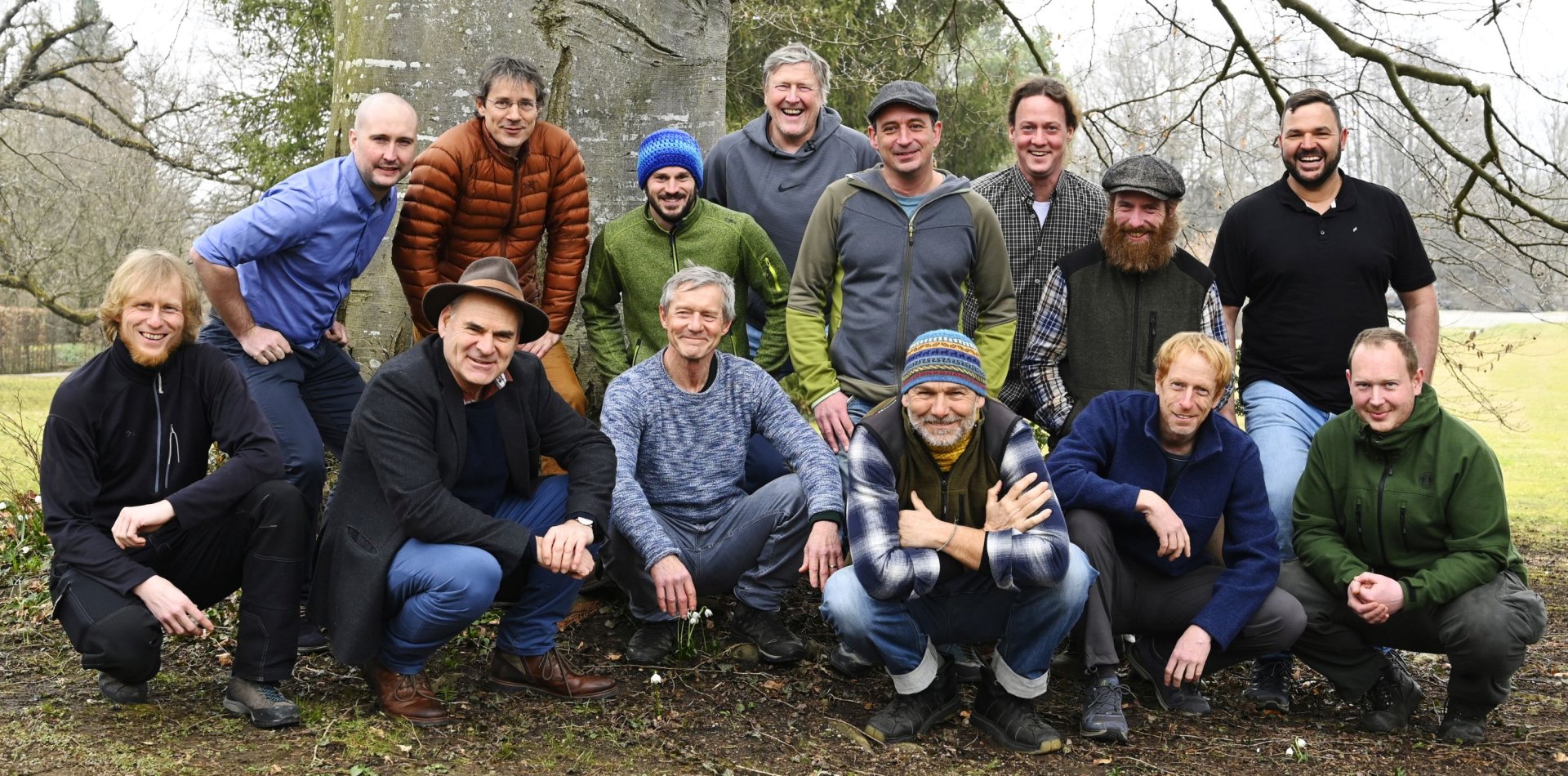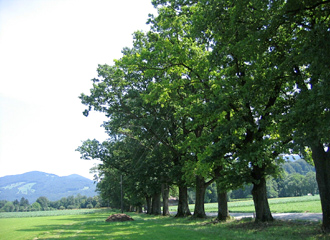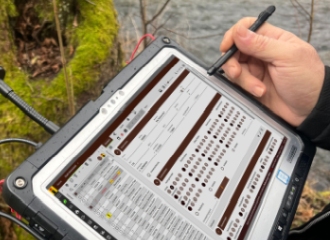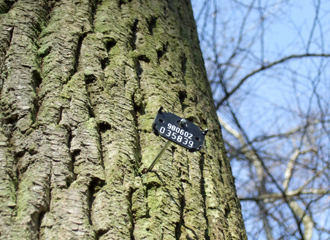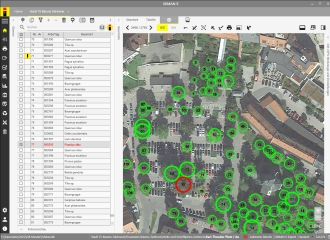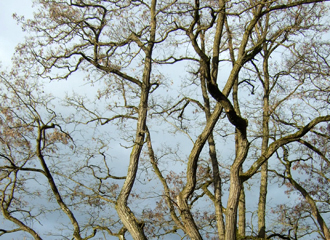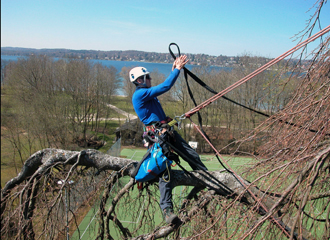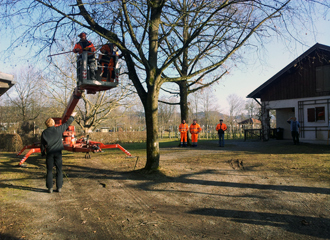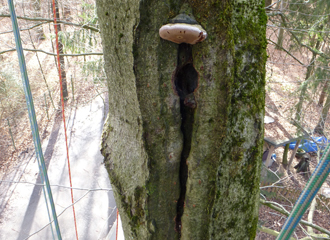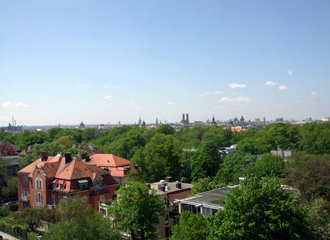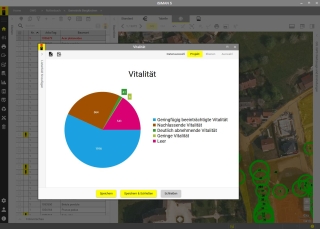Tree inspection
Tree owners are liable for any damage that their trees may cause and thus have to abide by the laws governing public safety. It is therefore necessary to have systematic tree inspections carried out. The aim of these regular “check-ups” is to assess the condition of individual trees and tree stock and to document everything in comprehensive fashion. A standard inspection is always carried out from the ground, and all examinations – whether one individual tree or a whole stand of trees – have to be conducted with the same precision. Only where the type of documentation of the results is concerned will there be differences.
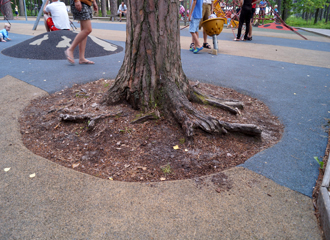
How are trees inspected?
During a standard inspection, the tree is examined all the way from the top of its crown to its base. Equipment of any kind that is attached to the tree, including integrated crown support systems, also has to be visually inspected for proper function. If the tree shows any symptoms of decay or damage, these are checked on the spot using simple tools, such as a chisel. If abnormalities are detected, they are assessed and then documented using the GIS-assisted tree inventory software that we ourselves developed. Only if “suspicious circumstances” are apparent will treatment or further inspections be initiated.
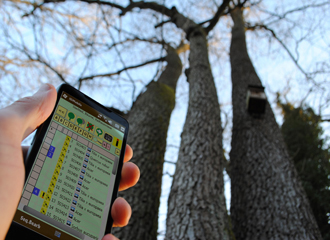
Which exmamination methods do Brudi & Partners use?
How safe a tree is depends on biological factors (e.g. the tree’s vitality), the local environmental conditions that exist where the tree stands (e.g. wind exposure), and the tree’s load-bearing capacity, which can be significantly affected by decay or cavities.
Brudi & Partners favour the use of tree-preserving inspection methods that are based on the recognition of reactions between tree and disease. The combined application of tree biology, meteorology and mechanics can enable a holistic assessment of a tree’s load capacity and performance.
This inspection procedure is known as the Statics-Integrated Assessment method (SIA method) and it is the foundation of our inspection methodology. Brudi & Partners do not use VTA (Visual Tree Assessment), a four-step inspection procedure that often ends in the use of instruments that will cause damage to the tree.
Who does the tree inspections at Brudi & Partners?
Our experts have many consecutive years of practical experience in the field of arboriculture and tree inspection. They are qualified or certified tree inspectors who regularly receive advanced, in-house training.
If a diagnosis of tree damage cannot be concluded by the tree inspector, or if further safety-related technical examinations are requested by the contracting party, our company’s publicly appointed and certified expert witnesses are on hand to contribute their know-how.
